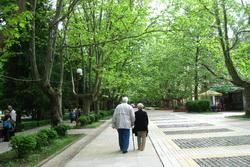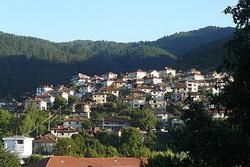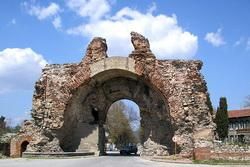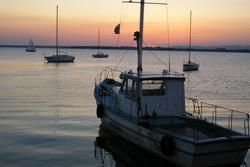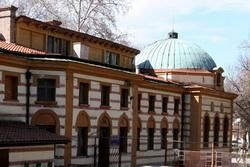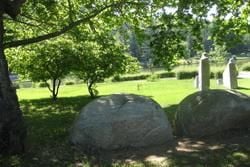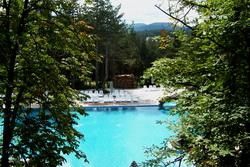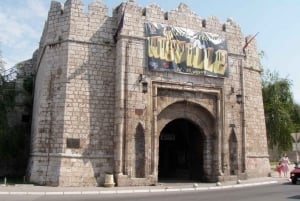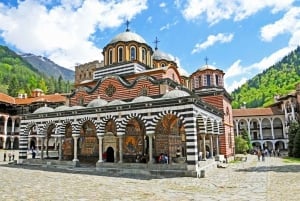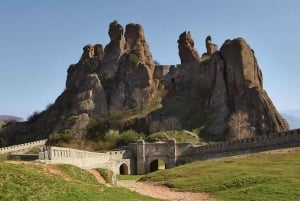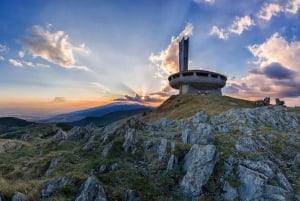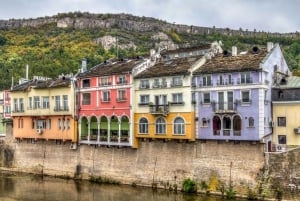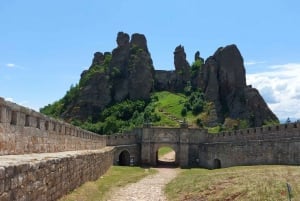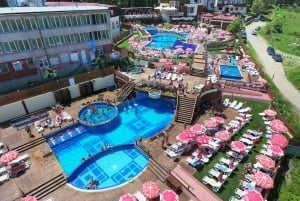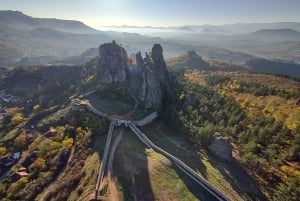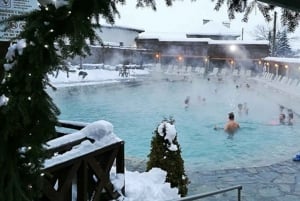Mineral Waters of Bulgaria
When it comes to mineral waters, few countries in the world can hold candle to Bulgaria. The reason for this is quite obvious: it boasts well over 200 mineral springs, 148 in its southern half and 77 in its northern half, to be precise. Most of them were discovered and developed centuries ago and they played pivotal role for the establishment of not one or two towns. Nowadays the bulk of them have become popular spa resorts that attract lots and lots of people who relish the healing power of water. The average temperature of the springs in Bulgaria ranges from 37 to 50°C and their waters are generally characterised by low levels of mineralization. But enough with the facts. Now let’s see where to find them.
Sofia:
Our search starts from the very heart of the capital city. There one will stumble across the refreshing oasis of Sofia’s Central Mineral Baths. The warm mineral water spouts just outside the beautiful building where they are located and its lovely taste is enjoyed by both locals and tourists. The spring owes its immense popularity to the fact that it lies in one of the most attractive areas of the capital’s centre: right between Banya Bashi Mosque, the Sofia Synagogue, the Catholic Cathedral of St. Joseph and St. Nedelya Orthodox Church. This religious crossroads is a common rest stop for all those who have set out on a pilgrimage around Sofia’s most remarkable cultural and spiritual landmarks. But if you think that this is the only mineral spring in the city, you are wrong. Knyazhevo and Gorna Banya, both located at the outskirts of Sofia and at the foot of the majestic Vitosha Mountain, also take pride in their waters. The hundreds of tourists who stop by these mineral springs to fill up their canteens on their way up the mountain are the sole proof of their high qualities and great taste.
Varshets:
The town of Varshets, situated approximately 100 km north of
Sofia, is one of the oldest and largest spa resorts in Bulgaria. Its history dates back to Roman times when its mineral waters were first used for medical purposes. Later, with the construction of the first public baths and the Sun Garden, the second biggest urban park in the country, at the turn of the 20th century this place immediately became the preferred vacation spot of many affluent Bulgarians and foreign tourists, including the Bulgarian royal family among others. Today it is a quiet relaxation haven whose proximity to
Stara Planina (Old Mountain) makes it a great starting point for hiking tours in the mountain. This is also where the hottest mineral spring in Northern Bulgaria can be found (38°C).
Kyustendil:
Thanks to its thermal springs, Kyustendil was known as "the town of baths" in ancient times. No wonder that in the 2nd century AD the Romans decided to build the Pautalia Baths there. They sprawled over a territory of 1000 sq. m. and used a sophisticated system of vaulted brick corridors to heat the building’s floors. At present this turns out to be the second largest bath complex in Bulgaria. It is partially overtaken by the beautiful Cifte Bathhouse, the 20th century conversion of the town’s old Turkish baths. Kyustendil is also the place that produces the most delicious naturally grown fruits in the country, hence its modern-day nickname: "Bulgaria’s orchard". The town lies 90 km southwest of
Sofia and 50 km north of Sapareva Banya where one will find the hottest thermal spring in Bulgaria (103°C) and also the only geyser in continental Europe.
Sandanski:
Sandanski, located 160 km south of
Sofia and just 20 km north of the Greek border, is the most famous spa resort in the southwestern region of the country. What people really like about it is the peaceful atmosphere it creates. Its hotels and guest houses are always open for tourists who seek a tranquil spot to spend their holidays. Anyway, its surroundings abound in tourist attractions so you will always have plenty of options to spice up your vacation should you feel the need to.
Melnik, the smallest town in Bulgaria, the
Rozhen Monastery and the village of Rupite are all such places.
Velingrad:
The town of Velingrad, commonly labeled as the spa capital of the Balkans, lies in the Western
Rhodopes, 80 km southwest of
Plovdiv. In its core this place is a tourist sanctuary with beautiful parks, neat little centre and springs that supply the many hotels, swimming pools and bath houses with steaming hot mineral water. Most of the town’s public baths are located in the Chepino quarter, east of the town centre, where visitors can also hire rowing boats for excursions on a lake fed by Kleptuza, the largest karst spring in the country. However, the healing waters are not the only reason why hundreds of tourists visit Velingrad every year. Due to its location, this place also offers many mountain-related activities such as trekking, mountain biking and skiing in the winter.
Bansko, one of the most popular ski resorts on the Balkan Peninsula, is just 60 km away
Devin:
Devin lies hidden in the heart of the
Rhodopes, surrounded by the mountain’s green hills and lofty rocks. Throughout the years, it has become one of the most highly praised spa resorts in Bulgaria and it’s all because of the qualities of its mineral springs. Their water is used for the treatment of many cardiovascular and neurological diseases and has great soothing effect on the human body on account of its low acidity, medium levels of mineralization and high temperatures. Besides that, the town is also an access point to some of the Rhodopes’ most popular natural and cultural landmarks:
Trigrad Gorge and
Dyavolsko Garlo Cave (Devil’s Throat) are just a couple of kilometres away;
Yagodinska Cave is not too far as well; the village of
Shiroka Laka, an architectural and folklore reserve, is situated 20 km southeast of the town, while
Pamporovo Ski Resort is 34 km away in the same direction.
Hisarya:
Hisarya is a more-than-two-thousand-year-old town in central Bulgaria, located 42 kilometres north of
Plovdiv. People often go there hoping to find ample evidence of its historical prominence and none of them ever gets disappointed because the town is full of landmarks which mainly come in the form of ancient strongholds and fortification walls. But its rich past is not the only thing that makes tourists want to visit the town. Its 22 mineral springs and the tasty healing water they produce also play an important role for that.
The Black Sea Coast:
When we talk about the sea, balneotherapy and spa are probably not the first things that come to our mind. With the
Bulgarian seaside, however, this may be about to change. There are quite a few first-class spa centres scattered across the Black Sea Coast where one can combine standard recreational procedures with some untypical ones such as mud-treatment, for example. The huge reserves of medicinal mud in the Bulgarian Black Sea region have led to the promotion of this type of treatment and nowadays many people are driven to the shore mainly by their desire to experience its cleansing effects. The biggest spa resorts where such mud-treatment procedures are available are
Varna, the Riviera, Albena and Balchik to the north and Pomorie, Primorsko, Ahtopol, Sunny Beach, Sozopol and Kiten to the south.
Photos by E.Bliznashka


